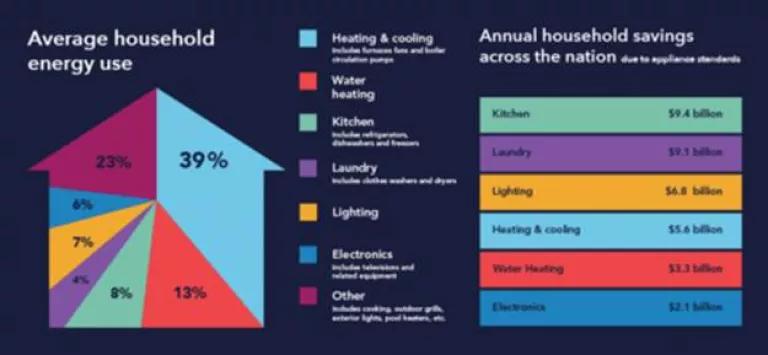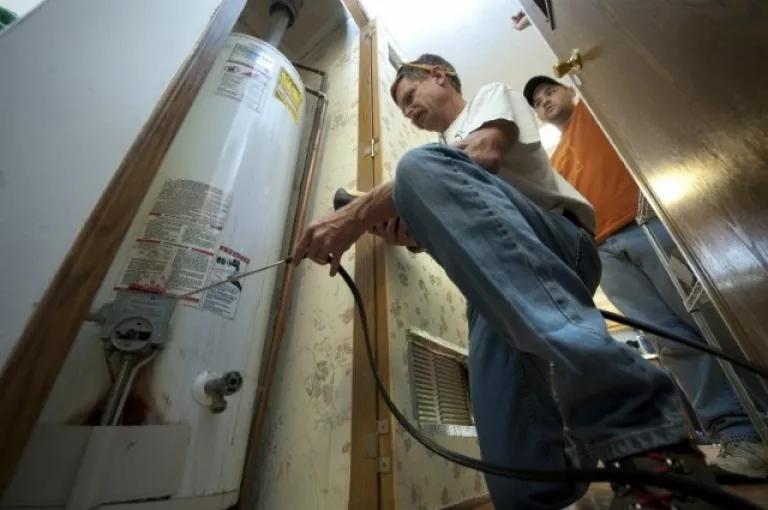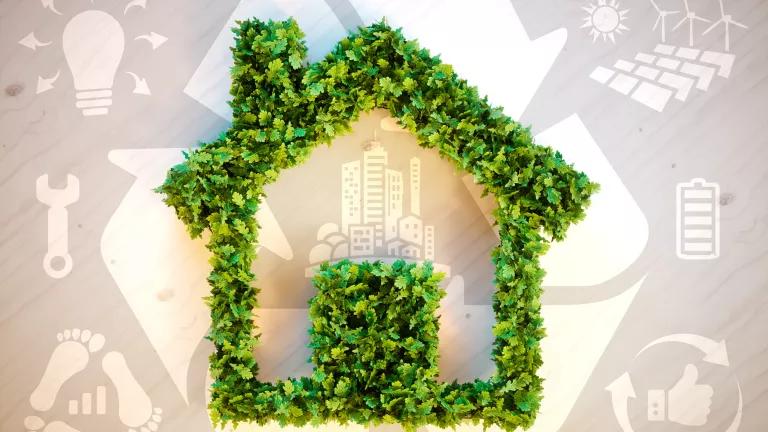
Energy efficiency gained ground in 2015, even in Washington's hyper-partisan environment --- demonstrating once again that there is strong support for smarter energy use that spurs innovation, creates jobs, lowers utility bills, and cuts pollution.
Bipartisan Energy Efficiency Improvement Act signed into law
President Obama signed into law the bipartisan Energy Efficiency Improvement Act. The measure includes a new Tenant Star voluntary labeling program designed to promote energy efficiency in leased commercial space during design and occupancy. The Tenant Star program has the potential to cut utility bills for landlords and tenants by an estimated 2 billion dollars by 2030 and reduce carbon emissions by nearly 12 million metric tons. The measure also makes it possible for large water heaters to be used for energy storage.
Big progress on efficiency standards
The president has set a goal of reducing carbon pollution by at least 3 billion metric tons by 2030 through efficiency rules for appliances and federal buildings. And in 2015, the Department of Energy (DOE) released efficiency standards for new rooftop air conditioners, heat pumps, and furnaces that heat and cool more than half of America's commercial floor space. Together, they represent the largest savings of any energy-saving rule issued by the agency since the standards program began in 1987, and will save about the same amount of energy as all the coal burned in the U.S. to generate electricity in a year.
An agreement was reached on energy conservation standards for large refrigerated coolers and freezers found in almost every restaurant, supermarket, and convenience store in the country.
DOE proposed the first efficiency performance standards for electric and gas ovens (estimated to save $4.7-$11 billion over 30 years). In the final week of 2015, the agency also issued final rules for ceiling fan light kits, boilers, beverage vending machines, pre-rinse spray valves, and commercial and industrial pumps.

Utilities continue to advance efficiency
America's utilities are now our nation's most important investors in smarter use of electricity and natural gas, helping all of us reduce both energy bills and pollution. According to the Institute for Electric Innovation, U.S. utility investment in efficiency programs, such as weatherization and rebates for highly efficient appliances, continues on an upward path and exceeded $7 billion in 2014 (the latest available figures). This is well over double the $2.7 billion total for 2007.
States and cities continue to promote energy efficiency
California, already a national leader in energy efficiency, set a goal to double energy savings in homes, businesses, and factories by 2030. The level of energy savings set by SB 350 will reduce the state's total statewide electricity needs by about 25 percent, and reduce its natural gas needs by about 10 percent below the demand projected in 2030.

New York pledged to cut energy consumption in buildings by 23 percent by 2030. The city and county of Denver announced the Energize Denver initiative, which aims to improve the energy efficiency of commercial and multi-family buildings by 10 percent by the end of 2020 and double that in the following decade. And Atlanta became the first city in the Southeast to pass a benchmarking and audit policy for large commercial buildings, potentially leading to a 20 percent reduction in commercial energy use by 2030, the creation of thousands of jobs, and a reduction in carbon emissions by 50 percent.
Despite gains, efficiency's supporters forced to play defense
The U.S. House passed an energy bill that, incredibly, included an efficiency title that could increase energy consumption and consumer costs. The bill has yet to come before the Senate, and the administration has issued a veto threat. Even more startling, some Republican members of Congress sought to repeal all state and federal efficiency standards for appliances and equipment, even though the legislation establishing the federal efficiency program was signed by President Reagan, a GOP icon, and the standards saved consumers $60 billion in 2014 alone, and kept 2.3 billion tons of carbon pollution out of the atmosphere. In the end, the proposal died on a procedural matter, but more threats loom.
Energy efficiency achieves greater international recognition
The G20 gave its official support for the G20 Energy Efficiency Action Plan at its November 2015 meeting, elevating the world's first fuel to a new level. This is particularly important since strong energy efficiency standards across the G20 could reduce climate pollution 6.9 gigatons per year by 2030. That's as much climate pollution as the United States currently emits each year and would lift world GDP $18 trillion by 2035.
2016 promises to continue these gains
Energy efficiency is a critical tool for meeting our energy needs cheaply and fighting climate change. It is good for the economy, good for the environment, and good for consumers' wallets. Efficiency is a key cost-effective solution for states as they work to cut carbon pollution from power plants, the single biggest source of U.S. greenhouse gas emissions, under the federal Clean Power Plan finalized in 2015. It becomes even more indispensable as we look to meet the ambitious carbon reduction goals agreed to in Paris at the meeting of the United Nation's Conference on Climate Change (COP21).
A toast to an efficient 2016, as well!
[Bipartisan cartoon from Flikr by Akabics; household savings graphic and energy audit photo courtesy of DOE]



